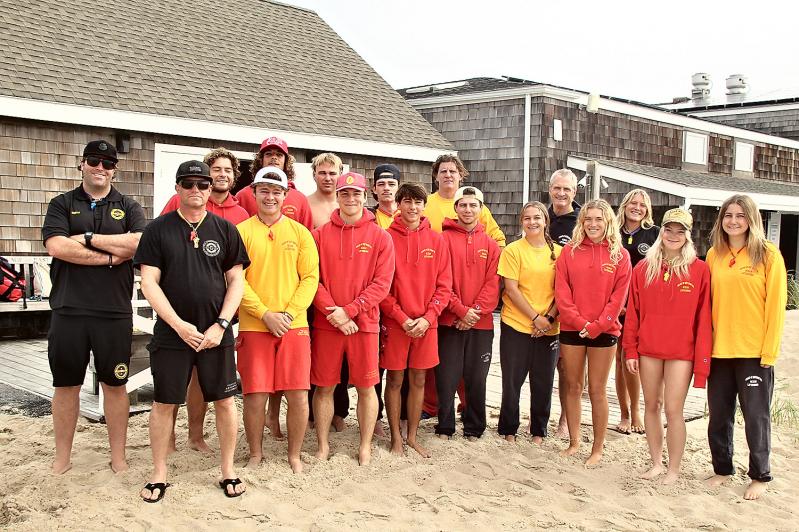It didn’t take long for the East Hampton Village lifeguard squad to get called into action this season. In fact, due to the above average temperatures last weekend, the village opened Main Beach early and happily, lifeguards were present.
“It was a good way to get the feet wet again,” said Drew Smith, the chief lifeguard for the village.
On Saturday, Mr. Smith heard from Jason Brunner, a lifeguard captain, that two young boys, one age 10, were playing on their boogie boards on a sandbar when they got into a little trouble. “When they came off the sandbar, the lifeguards noticed it. They weren’t struggling, but they weren’t in the best position.” They were in a rip current.
Georgia Plankster, a lifeguard, ran out with a torpedo, or “torp,” and swam out to the boys. The torpedo is an oblong float that helps the rescuer and the victim get back to shore more easily. It’s attached to a line. Juliette Angiel, another lifeguard, was sent by Mr. Brunner to help pull the line in and J.P. Amaden, a third lifeguard, assisted with the line feed.
“With the water being this temperature, it’s nice to have somebody be able to pull you in instead of having to swim in,” said Mr. Smith. The water temperature in the ocean last weekend was 51 degrees.
Mr. Smith explained that while the conditions were calm — it was a green flag day — rip currents can develop at any time.
“The kids just happened to be in the right spot at the right time,” he said. And they were right in front of stand two and those lifeguards acted quickly and were able to get out to them before the situation took a turn for the worse.
The lifeguards explained to the kids how to handle a rip current. “There was a bit of an educational situation afterwards,” said Mr. Smith.
East End Ocean Rescue, a nonprofit dedicated to providing educational material and lifeguard equipment to local beaches, donated several signs to the village a few years ago that explain what to do if you’re swimming and get caught in a rip current. “It’d be great for people to check those signs out,” said Mr. Smith.
According to the signs, these powerful currents of water move away from shore. Swimmers caught in one should not panic, as the current itself won’t pull them under, nor should they waste energy by swimming against the current, even though swimming back to shore might be instinctive. Instead, swimming parallel to the shore and out of the current is the best way to escape a rip. If a swimmer can’t get out of the current, the signs advise treading, or floating, and yelling or waving for assistance if necessary.
Generally, lifeguards say, it’s best to swim with someone else and in view of a lifeguard, if possible.

